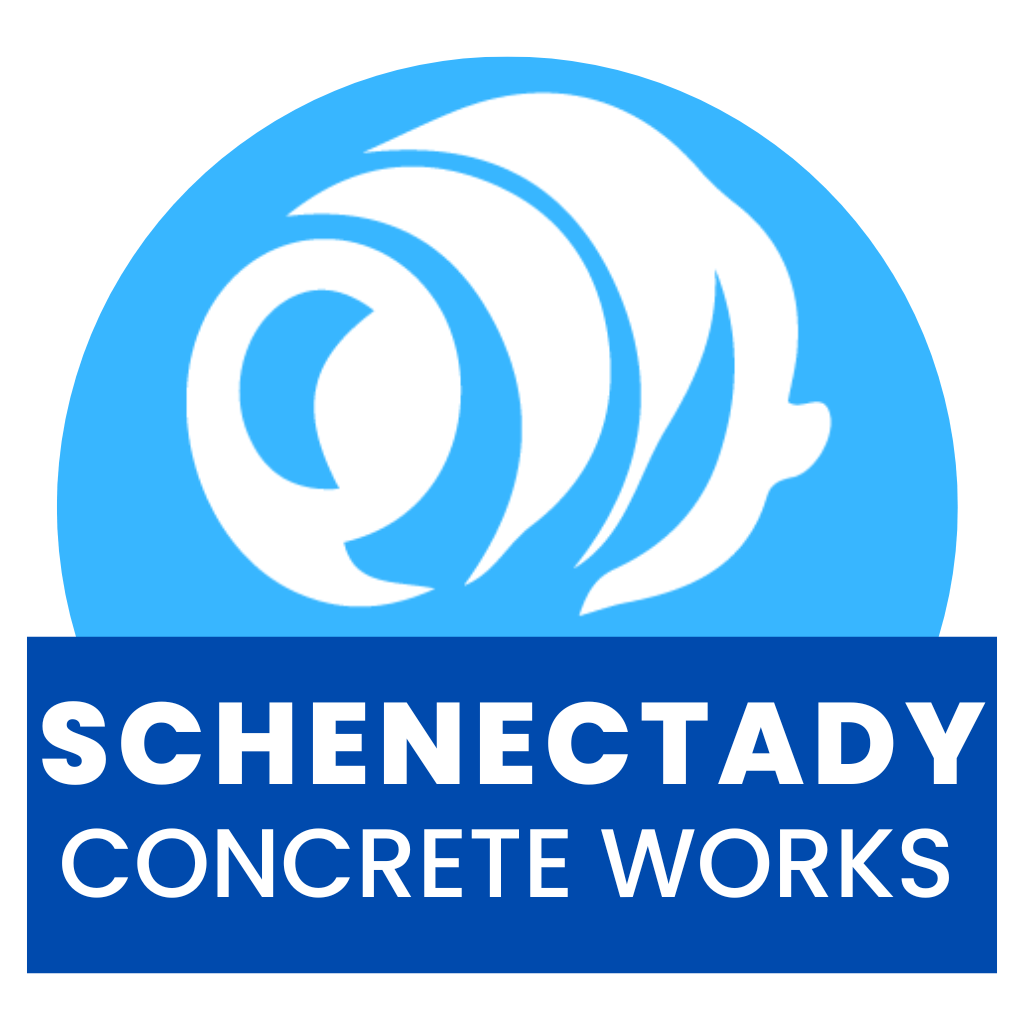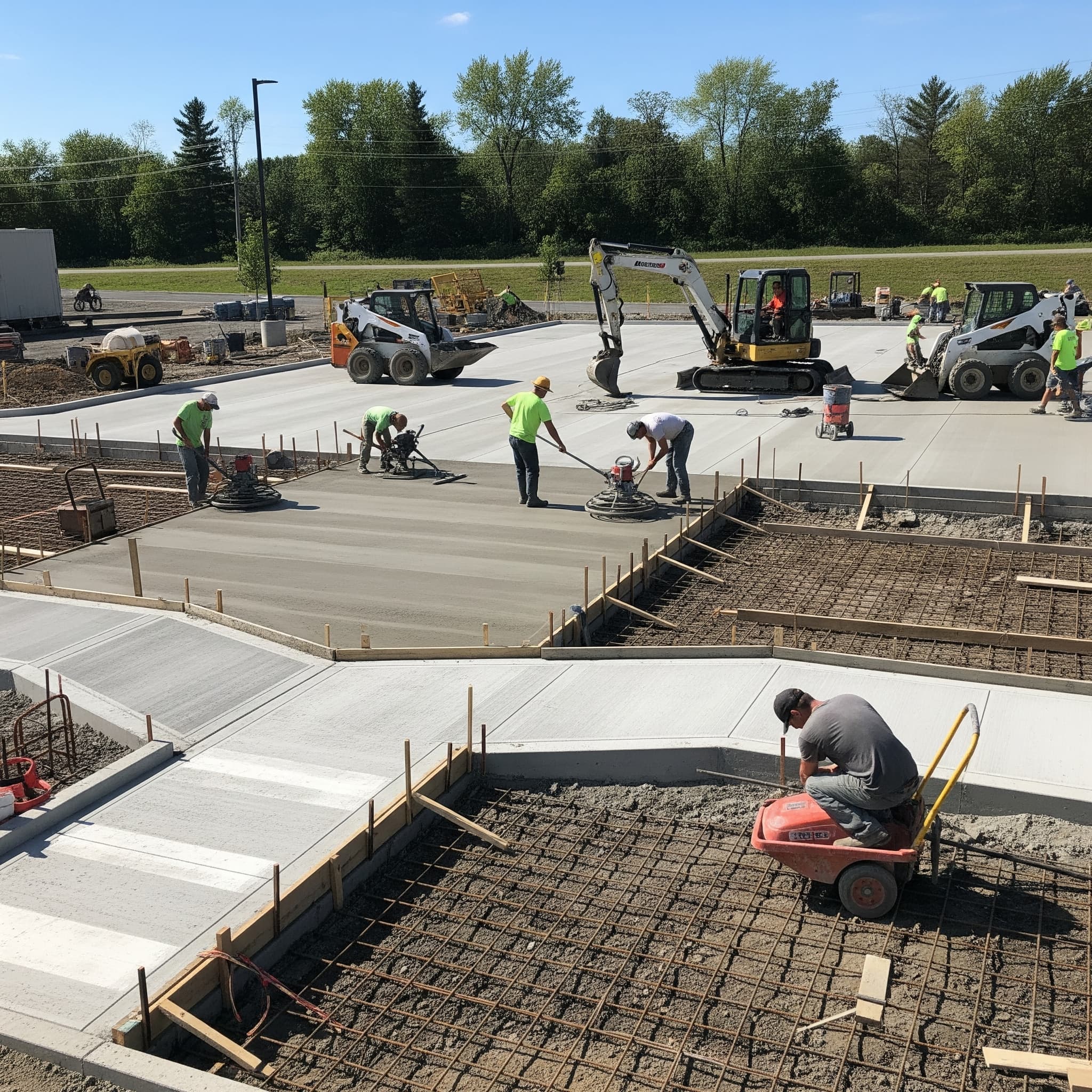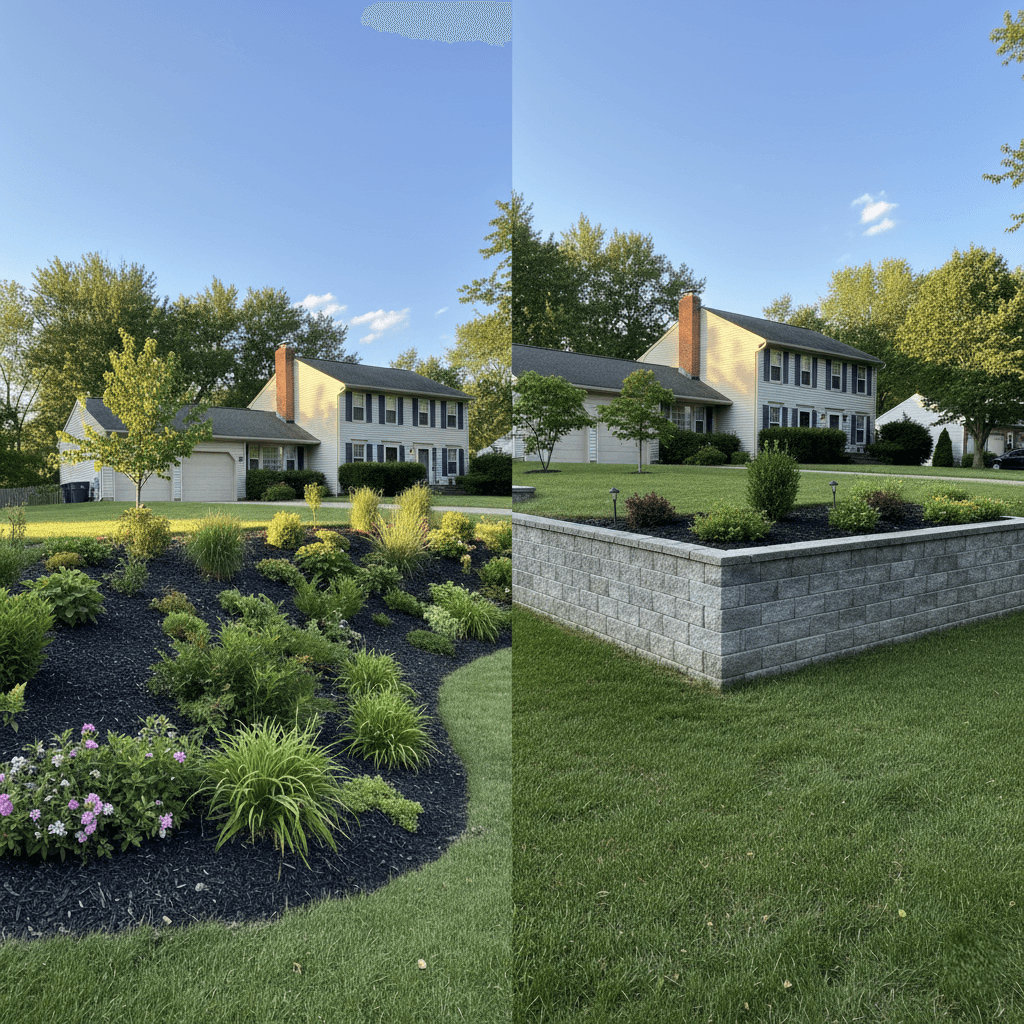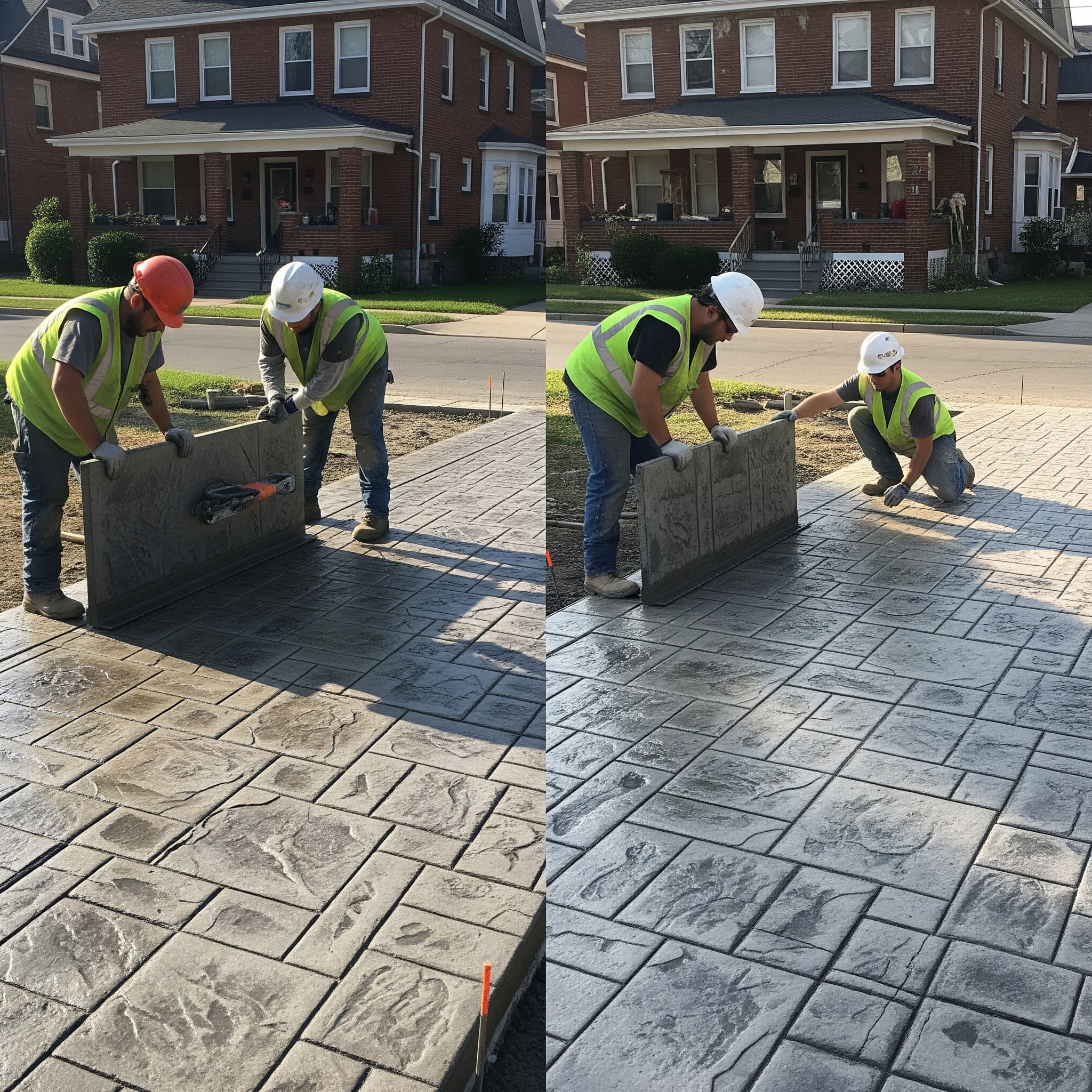
When to Resurface Concrete in Schenectady: Signs It’s Time
Concrete Resurfacing Schenectady
Recognizing the right time for concrete resurfacing protects your property investment while avoiding costly complete replacement projects. Homeowners throughout Schenectady face unique challenges from harsh winters, freeze-thaw cycles, and temperature fluctuations that accelerate concrete deterioration. Properties near the historic Stockade District particularly benefit from timely resurfacing that preserves both functionality and aesthetic appeal. Understanding early warning signs helps property owners make informed decisions about maintenance timing and budget planning. Professional assessment of surface conditions ensures appropriate treatment approaches that maximize both value and longevity.
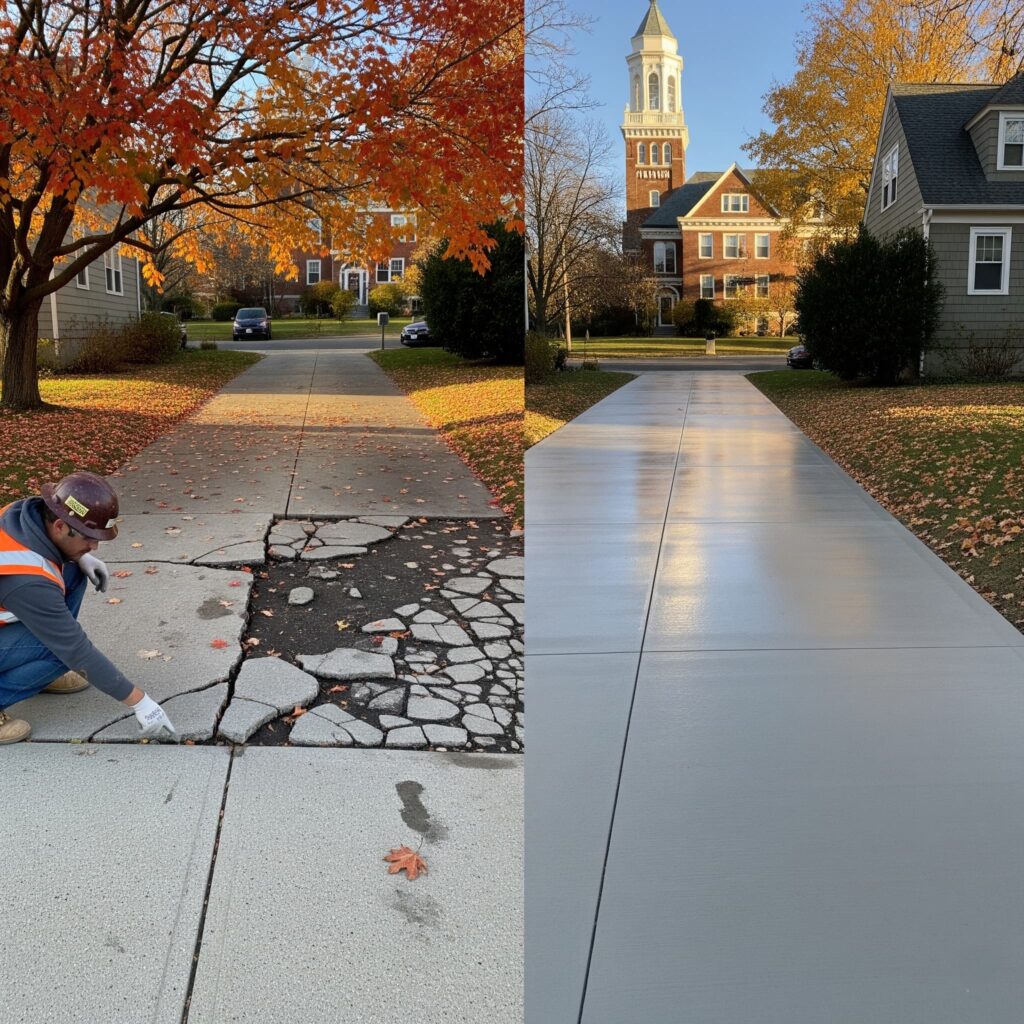
Age-Related Concrete Deterioration Signs
Most residential concrete surfaces show signs of wear after 15 to 20 years, with resurfacing becoming necessary between 20 to 25 years of age. However, upstate New York’s challenging climate can accelerate this timeline significantly. Properties experience faster deterioration due to repeated freeze-thaw cycles that cause internal stress and surface damage.
Concrete installations near Union College’s campus often require attention sooner than national averages due to heavy foot traffic and exposure to deicing chemicals during winter months. Regular inspections help identify deterioration patterns before they compromise structural integrity or require complete replacement.
Surface Wear and Texture Loss
Smooth, worn areas indicate surface degradation where concrete has lost its protective texture and aggregate exposure. These zones become slippery when wet and accumulate stains more readily than properly textured surfaces. Loss of original broom finish or decorative patterns signals that protective surface layers have worn away.
Properties along Central Park’s perimeter frequently show accelerated wear from organic debris, moisture retention, and chemical exposure from landscaping treatments. Early resurfacing prevents deeper damage that requires extensive repair work.
Crack Assessment and Warning Signs
Hairline cracks wider than one-quarter inch indicate structural stress that requires professional evaluation before resurfacing. Multiple cracks across the surface suggest underlying movement or inadequate base preparation during original installation. Network cracking patterns often indicate freeze-thaw damage common throughout the Capital Region.
Settlement cracks near building foundations or along driveway edges require immediate attention to prevent water infiltration and further deterioration. Properties near the Mohawk River often experience soil movement that contributes to concrete cracking and requires specialized repair approaches.
Differentiating Repairable Versus Replacement Cracks
Cracks less than one-quarter inch wide and confined to surface layers typically respond well to resurfacing treatments. Deeper structural cracks extending through the full slab thickness require complete replacement rather than surface restoration. Professional evaluation determines whether existing damage can be adequately addressed through resurfacing.
Expanding cracks that grow noticeably between seasons indicate active movement that may preclude successful resurfacing. These situations often require foundation assessment and complete reconstruction to achieve lasting results.
Staining and Discoloration Issues
Permanent stains from automotive fluids, rust, or organic materials indicate sealer failure and surface porosity that benefits from resurfacing. Dark streaks, oil spots, and tire marks that resist cleaning treatments suggest the concrete has absorbed contaminants beyond surface cleaning capabilities.
Properties near Proctors Theatre and downtown areas often experience staining from vehicle emissions, food service activities, and urban environmental exposure. Resurfacing restores a uniform appearance while providing fresh protective coatings that resist future staining.
Chemical Damage and Efflorescence
White crystalline deposits (efflorescence) on concrete surfaces indicate moisture migration that brings salts to the surface. While primarily cosmetic, persistent efflorescence suggests moisture problems that can compromise concrete integrity over time. Professional treatment addresses both surface symptoms and underlying moisture issues.
Damage from deicing salts appears as scaling, pitting, or surface deterioration, typically occurring near building entrances and high-traffic walkways. Properties throughout neighborhoods near the GE Realty Plot frequently require resurfacing due to winter chemical exposure.
Spalling and Surface Deterioration
Concrete spalling occurs when surface layers flake, chip, or peel away, exposing aggregate and creating rough, uneven textures. This deterioration results from moisture infiltration, freeze-thaw damage, or corrosion of internal reinforcement. Spalling areas provide ideal conditions for accelerated deterioration if left untreated.
Early-stage spalling responds well to resurfacing treatments that restore smooth, protective surfaces. However, extensive spalling affecting large areas may require partial replacement before resurfacing can be successfully applied.
Freeze-Thaw Damage Patterns
Scaling damage appears as thin layers of concrete that flake off during freeze-thaw cycles, particularly common on horizontal surfaces exposed to moisture and temperature fluctuations. This damage typically begins along edges and joints before spreading across broader surface areas.
Properties near Jackson’s Garden and other moisture-rich environments often experience accelerated freeze-thaw damage requiring proactive resurfacing to prevent extensive deterioration. Proper timing prevents minor scaling from developing into major structural problems.
Functional Performance Decline
Uneven surfaces that cause drainage problems, puddling, or ice formation indicate settlement or deterioration requiring professional attention. Poor drainage accelerates concrete damage while creating safety hazards during the winter months, which are common throughout the Capital Region.
Surfaces that have become excessively porous allow water penetration that leads to internal damage, particularly problematic during freeze-thaw cycles. Loss of water resistance indicates sealer failure and surface degradation that benefits from comprehensive resurfacing.
Safety and Liability Considerations
Rough, uneven surfaces create tripping hazards that increase liability risks for property owners. Deteriorated concrete around building entrances, walkways, and gathering areas poses particular concern for visitor safety and legal exposure.
Properties near the Municipal Golf Course and other high-traffic areas require especially careful attention to surface safety. Timely resurfacing eliminates hazards while restoring smooth, safe walking surfaces that reduce accident risks.
ADA Compliance Requirements
Commercial properties must maintain smooth, accessible surfaces that comply with the Americans with Disabilities Act requirements. Deteriorated concrete can create barriers that require expensive remediation if not addressed through timely maintenance.
Residential properties benefiting from accessibility features also require properly maintained surfaces to ensure continued functionality and safety for users with mobility challenges.
Economic Timing Considerations
Resurfacing costs significantly less than complete replacement while extending concrete life by 8 to 15 years when properly executed. Early intervention prevents minor issues from developing into major problems requiring expensive reconstruction projects.
Property values benefit from well-maintained concrete surfaces that enhance curb appeal and functional performance. Strategic resurfacing timing maximizes return on investment while avoiding emergency repair situations that limit contractor selection and increase costs.
Seasonal Timing for Optimal Results
Spring and early fall provide ideal weather conditions for concrete resurfacing throughout the Schenectady area. Moderate temperatures and controlled moisture levels support proper curing while avoiding extreme weather challenges.
Planning resurfacing projects during optimal seasons ensures quality results while providing sufficient curing time before harsh winter conditions return. Properties near the Villa Italia area often schedule maintenance during favorable weather windows to achieve the best long-term performance.
Weather Window Planning
Successful resurfacing requires several consecutive days of moderate temperatures and low precipitation probability. Professional contractors monitor weather forecasts carefully and may recommend project delays to ensure proper curing conditions.
Temperature stability during the 48-hour curing period proves critical for achieving maximum bonding strength and durability. Rushing projects during marginal weather conditions can compromise long-term performance and require premature replacement.
Schenectady Concrete Works offers professional concrete resurfacing evaluation and expert restoration services throughout the greater Capital Region. Our experienced team identifies optimal timing for your project while providing comprehensive solutions that restore both beauty and functionality to your concrete surfaces.
